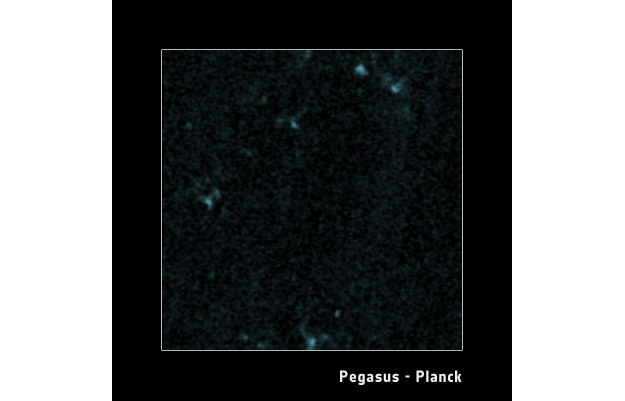Molecular clouds in the Pegasus region

Date: 12 February 2012
Satellite: Planck
Depicts: Pegasus molecular clouds
Copyright: ESA/Planck Collaboration
This image shows molecular clouds in the Pegasus region as seen through the glow of carbon monoxide (CO) with Planck (blue).
Molecular clouds, the dense and compact regions throughout the Milky Way where gas and dust clump together, represent one of the sources of foreground emission seen by Planck. The vast majority of gas in these clouds consists of molecular hydrogen (H2), and it is in these cold regions that stars are born. Since cold H2 does not easily radiate, astronomers trace these cosmic cribs across the sky by targeting other molecules, which are present there in very low abundance but radiate quite efficiently. The most important of these tracers is carbon monoxide (CO), which emits a number of rotational emission lines in the frequency range probed by Planck's High Frequency Instrument (HFI).
Emission lines affect a very limited range of frequencies compared to the broad range to which each of Planck’s detectors is sensitive, and are usually observed using spectrometers. But some CO lines are so bright that they actually dominate the total amount of light collected by certain detectors on Planck when they are pointed towards a molecular cloud like those in the Pegasus region.
The all-sky CO map compiled with Planck data shows concentrations of molecular gas in portions of the sky that had never before been surveyed. For example, many regions at high galactic latitude, such as the Pegasus region, had not been covered by the CO survey compiled by Dame et al. (2001). Planck's high sensitivity to CO also means that even very low-density clouds can be detected, as in the case of the Pegasus clouds.
Follow-up observations and further studies of this and other stellar nurseries will allow a detailed investigation of the physical and chemical conditions that lead to the formation of molecular clouds, shedding new light on the very early phases of star formation.







